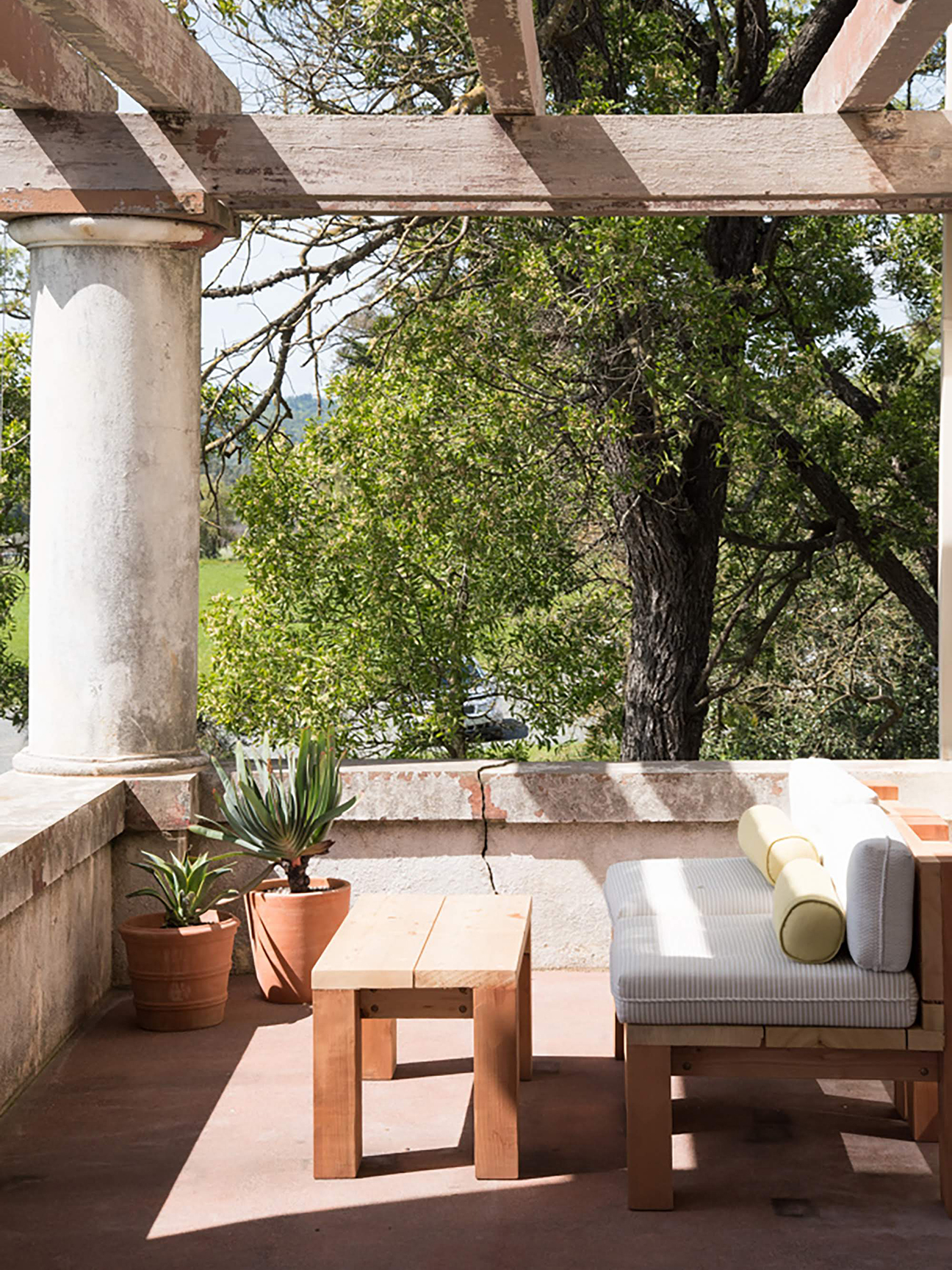We may earn revenue from the products available on this page and participate in affiliate programs.
A dining area for sangria-filled summer evenings, a patio lined with Technicolor woven armchairs, a little garden where you plan to prove your green thumb. All that’s well and good, but don’t neglect one very important part of your outdoor space: the zen den.
According to a recent report by Yardzen, 74 percent of homeowners say these spaces are the most important component of their backyard—but what exactly are they? “These are areas that invite us to unplug, slow down, and relax,” explains Rebecca Bullene, founder of Greenery NYC. “They can be for meditation or simply to help us unwind from the daily grind.” She, too, has noticed an uptick in clients interested in the concept the past couple of years—in fact, her Brooklyn store specializes in biophilic design, a practice based on the theory that humans have an innate desire to connect with nature. “It’s somewhat intuitive when you really think about it: We all feel better when we go for a walk in the woods or feel the sun on our skin.”
Add to that a 2019 study that found spending even 120 minutes a week outdoors can significantly boost happiness and overall well-being, and we’re pretty much sold. Our only question is how to make it happen. That’s where Bullene comes in: We asked the expert to break down the components of a zen den—plus, what she recommends if you live in the city and your “outdoor space” is really just a fire escape.
Carve Out Space for Privacy
The first thing Bullene does? Craft the shape of the zen den itself—and integral to that is an area that feels secluded. “I’ll often use screening, trellising, or plants to create a nook that is explicitly for relaxing, as opposed to a spot for entertaining,” she says. Her go-tos: evergreen shrubs like junipers or arborvitaes. For something that will last year-long, she suggests bamboo.
Include Some H20
Water features are key, especially if you live in an urban area where the streets are noisy (or if you just need to drown out the sound of your neighbors—we’ve all been there). “The sound of moving water creates a beautiful white noise that can help the mind focus inward, rather than on nearby horns honking,” explains the pro. If you can swing it, splash out (pun intended) on a substantial-size fountain or waterfall. If not, this miniature fixture has captured our hearts.
Pepper in Trees
Plants are an obvious must-have, but in addition to the regular suspects, Bullene recommends incorporating a few deciduous trees that highlight the changing seasons and make you hyper-aware of your natural surroundings. Her favorite? Japanese camellias. “You’ll often find them planted in Buddhist temples and shrines,” she says. “Not only do they have beautiful evergreen foliage, but the blooms are stunning.” You don’t necessarily need to dig a hole in the ground either; simply pick up a larger planter and watch your new green friend flourish.
Take a Seat
“Comfortable seating is crucial—there’s nothing less zen than sitting on a stiff chair as you try to unwind!” says Bullene. Consider cushions upholstered with weatherproof fabrics or stools that will let you switch up your view. And if your idea of unwinding involves hosting a smattering of your closest friends, decorate in multiples to encourage conversation.
Transform Your Indoors, Too
Not everyone has access to a full yard to transform into a relaxation mecca. No matter: You can still turn your space into a calming enclave. Bullene suggests going the tropical route to do so. Think: a bird-of-paradise or larger plants like the Ficus Audrey. “It’s really wonderful to meditate beneath a tree as sun streams through a nearby window,” she notes.
However, if your green thumb leaves something to be desired, stick to easy-to-care-for options like snake plants or ZZ plants. Whether it’s outdoors or in, the one thing you definitely don’t want in a zen den is stress—and this includes worrying about accidentally killing your greenery. Namaste.
See more ways to make the most of plant parenthood: Your Plants Are Singing—Are You Listening? This Is the One Mistake You’re Probably Making With Your Plants How to Rescue Your Plants in Colder Weather
